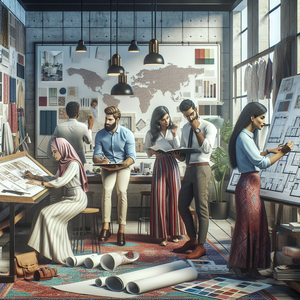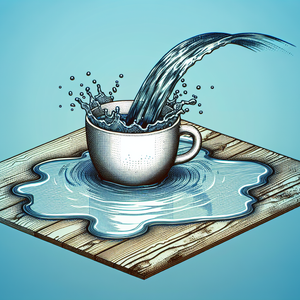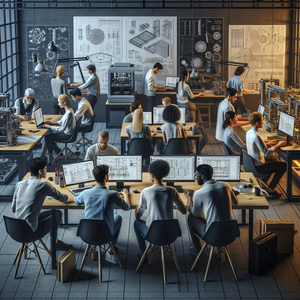
Charting Your Path in Interior Design: Key Roles, Responsibilities, and Opportunities for Growth
The world of interior design is rich with diverse career avenues, appealing to a range of interests and talents. Whether you thrive on creative expression or excel in technical execution, there is a place for you within this industry. This guide will delve into the various job titles in interior design, outlining their specific roles and the skills necessary for success. By understanding the career ladder—from Junior Interior Designer to Creative Director—you can better navigate your professional journey. The interior design job market is continuously evolving, shaped by trends and innovations in residential, commercial, and specialized sectors like hospitality design. This article serves as a comprehensive resource, detailing job opportunities, responsibilities, educational requirements, and the significant contributions each role makes to the world of interior design.
Job Summaries:
Junior Interior Designer:
- Support senior designers in executing their visions
- Create mood boards
- Draft floor plans
- Source materials
- Engage in client discussions
- Typically requires a degree in interior design or a related field
- Skills in design software like AutoCAD and SketchUp
Interior Design Assistant:
- Provide essential support to the design team through various administrative tasks and project assistance.
- Organizing samples.
- Maintaining project files.
- Communicating with vendors.
- A degree in interior design or a related discipline is often necessary.
- Strong organizational and communication skills are required.
Interior Designer:
- Interior Designers are responsible for conceptualizing and executing design solutions that enhance both functionality and aesthetics.
- Duties encompass client consultations, developing design plans, and overseeing project implementation.
- Typically, a bachelor’s degree in interior design and relevant experience are required.
- Certification like the NCIDQ is also required.
Senior Interior Designer:
- Manage more complex projects
- Potentially lead a team
- Nurture client relationships
- Craft innovative design concepts
- Ensure compliance with industry standards
- Generally requires a bachelor’s degree in interior design
- Requires several years of experience
Design Coordinator:
- A Design Coordinator ensures that design projects run smoothly by managing logistics, timelines, and budgets.
- Your duties will involve coordinating meetings, tracking project progress, and facilitating communication among team members and stakeholders.
- A background in interior design or project management is advantageous.
Interior Design Project Manager:
- The Interior Design Project Manager is responsible for the overall planning and execution of design projects.
- Managing both budgets and client relationships is a key responsibility.
- A strong project management background is essential.
- A degree in interior design is essential.
Creative Director:
- Set the creative vision for design projects.
- Ensure that innovation aligns with client objectives.
- Requires a robust portfolio.
- Requires extensive design experience.
- Requires strong leadership abilities.
Interior Architect:
- Interior Architects focus on the spatial design of environments, merging aesthetics with functionality.
- Your responsibilities will include creating spatial layouts and ensuring compliance with building codes.
- A degree in architecture or interior architecture is typically required.
Spatial Designer:
- Create functional and fluid environments within interior spaces.
- Conceptualizing layouts.
- Selecting furnishings that enhance user experience.
- A degree in interior design or architecture is generally required.
FF&E Designer (Furniture, Fixtures, and Equipment):
- FF&E Designers play a crucial role in selecting and specifying furniture, fixtures, and equipment for interiors.
- This position involves working closely with clients to understand their needs and sourcing appropriate products.
Lighting Designer:
- Lighting Designers specialize in creating effective and aesthetically pleasing lighting solutions.
- Responsibilities include conducting site assessments and developing lighting plans.
- A degree in interior design, architecture, or a related field is often required.
Kitchen and Bath Designer:
- Kitchen and Bath Designers focus on creating functional and stylish spaces in these essential areas.
- Your duties will include assessing client needs, developing layouts, and selecting materials and fixtures.
Exhibit Designer:
- Exhibit Designers create engaging displays for museums and trade shows.
- Responsibilities include conceptualizing themes and coordinating installations.
- A degree in interior design or a related field is often required.
Real Estate Stager:
- Real Estate Stagers prepare homes for sale, enhancing their appeal to potential buyers.
- Your tasks will include decluttering and arranging furniture to optimize space.
Design Consultant:
- Design Consultants provide expert guidance on interior projects.
- Your responsibilities will include assessing client needs and sourcing materials.
Technical Designer:
- Technical Designers focus on creating detailed drawings and specifications for construction.
- Responsibilities involve collaborating with architects to ensure design accuracy.
Facilities Planner:
- Facilities Planners design spaces to optimize their functionality.
- Responsibilities include developing layouts.
- Collaborating with stakeholders to ensure spaces meet aesthetic needs.
- Ensuring spaces meet operational needs.
Design Researcher:
- Design Researchers study trends and user behaviors to inform design decisions.
- Your responsibilities will include conducting interviews and analyzing data.
Interior Decorator:
- Interior Decorators enhance spaces through furnishings and decorative elements without altering structural elements.
- A background in design is helpful, along with a strong aesthetic sense.
Lead Designer:
- The Lead Designer oversees the design process, guiding the creative team.
- Your responsibilities will include client communication and project management.
The interior design landscape offers a wealth of career opportunities, each with its unique responsibilities and requirements. By understanding these roles, aspiring designers can make informed decisions about their professional futures. With the right education, skills, and experience, individuals can navigate the dynamic world of interior design, creating beautiful and functional spaces that cater to diverse client needs.
Explore More Jobs

